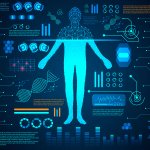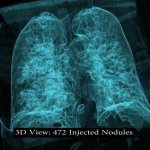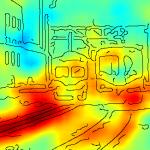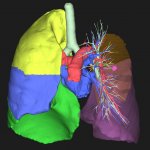
Article • IT
What data hackers get from hospital
When hospitals are hacked, the public hears about the number of victims – but not what information the cybercriminals stole.

When hospitals are hacked, the public hears about the number of victims – but not what information the cybercriminals stole.

As a member of the European Congress of Radiology (ECR) planning committee Professor Elmar Kotter suffered no serious challenge in pinpointing subject matter for the IT sessions. More than 300 submissions were received on artificial intelligence (AI). From the presentations, Kotter, Professor of Radiology and Senior Consultant at the Clinic for Diagnostic and Interventional Radiology, at the…

The Geneva University Hospitals (HUG) is the first European university hospital to utilize IBM’s artificial intelligence (AI) technology to help uncover therapeutic options for cancer patients. HUG will use the IBM Watson Health’s precision oncology offering, Watson for Genomics, an AI tool that enables oncologists to provide patients with more personalized, evidence-based cancer care. Using…

Healthcare is going digital worldwide at an incredibly rapid pace. More and more applications for prevention, diagnostics and therapy are being made into apps (with matching hardware) for smartphones and tablets or are even available as wearables for direct use on the body. Digitalisation is also striding forward in Germany, where doctors, therapists and patients still take a fairly analogue…

Scientists from EPFL have developed an algorithm that can determine whether a super-resolution microscope is operating at maximum resolution based on a single image. The method is compatible with all types of microscopes and could one day be a standard feature of automated models.

The School for Translational Medicine and Biomedical Entrepreneurship (sitem-insel School) in Bern, Switzerland, starts for the third time its Study Program in Translational Medicine and Biomedical Entrepreneurship. The program offers continuing education to specialists in industry, hospitals and academia in the field of translational medicine and biomedical entrepreneurship, expertise highly…

At the 71st AACC Annual Scientific Meeting & Clinical Lab Expo, Siemens Healthineers features in Booth #1039 its innovative IT solutions to combat the laboratory’s staffing challenges, limited budgets, and the increasing complexity in sample management and testing. “We will be demonstrating the power of our broad IT offerings and how the data they deliver, and artificial intelligence, can…

Beckman Coulter Life Sciences launched the online DURA Innovations calculator tool, a powerful cost benefit analysis resource to accompany its latest Cost Benefit Calculator Handbook. The free online tool enables laboratories to quantify the value of converting to a standardized flow cytometry workflow using the company’s dry reagent technology. The new calculator enables customers using liquid…

Since the microprocessor entered the medical laboratory we have watched how those responsible also have been confronted with the errors in the software supplied with it. Obviously, such errors are to be avoided or found and corrected before use. Nonetheless complete error-free software remains a dream. ISO 15189:2012 makes it obligatory for the manufacturer to identify errors in the form of…

Deployment of electronic health records (EHR) are increasingly cited as a factor in physician burnout. However, a senior figure with the Healthcare Information and Management Systems Society (HIMSS) – which supports the transformation of health through information and technology – believes defined use of data and information can help off-set the impact of burnout among health professionals.…

In the wake of an already devastating cancer diagnosis, European cancer patients often grapple with debilitating symptoms and side effects. For these patients, the eSMART (Electronic Symptom Management System Remote Technology) trial provides new hope for improved management of the side effects and symptoms of cancer, and with it, improved quality of life. Now, the eSMART Consortium presented its…

A researcher has created an objective model that classifies the degrees of the iridocorneal angle, a key element for assessing the severity of glaucoma. With this model, ophthalmologists will have a tool to help patients make a decision when considering surgery.

‘Hello, John? You are about to suffer a heart attack – please come to the hospital immediately!’ Will we, one day, be collected by emergency doctors even before we’re ill? If it was up to some AI experts at Medica, this could be the case – soon. Some obstacles must yet be overcome to achieve perfect AI predictions. Yet, during Medica, some IT experts ventured to gaze into a crystal ball.

A team of seasoned European healthcare entrepreneurs announced the foundation of MCG motion capture GmbH (MCG), the world’s first precision motion analysis and digital care company. The team combines decades of expertise in the medtech, digital health and biopharmaceutical industry, including big data integration, analysis for decision support, and long-standing experience in clinical trials as…

Artificial intelligence clinics and rehab bikes, exoskeletons and stylish protections masks – healthcare in Taiwan has many faces and facets as the international medical & healthcare exhibition Medical Taiwan in Taipei will show from 27 to 30 June 2019. We visited participating companies and hospitals to give you a sneak preview of some of the highlights that might well create a buzz in…

The current innovation process for medical technologies risks stifling the development of new devices, a leading researcher has argued. Alejandro Frangi, Professor of Computational Medicine at the University of Leeds, says the present system was geared towards small, incremental changes to existing technology or the development of new technologies that work for ‘most’ people but are…

Digitalization offers great potential for hospitals: diseases can be detected earlier, internal processes more efficiently organized, health expenditure reduced and patients better cared for. Artificial intelligence, robotics, sensor technology, big data, additive manufacturing or augmented reality - the technologies for this have long been available.

Interpretation of complex profiles of laboratory results can be significantly improved via multivariate pattern recognition software. A multivariate pattern recognition software, developed by a team led by Dr Piero Rinaldo at Mayo Clinic in Rochester, USA, aims to integrate results to diagnose a particular condition in a single score, in an objective evidence-based way that is open to worldwide…

Hackers can access a patient's 3-D medical scans to add or remove images of malignant tumors, thus placing patients at risk of misdiagnoses. The new study, published by Ben-Gurion University of the Negev cybersecurity researchers, showed that the altered scans successfully deceived both radiologists and artificial intelligence algorithms used to aid diagnosis. A 3-D CT (computerized…

Scientists put AI systems to the test und provide a glimpse into the diverse “intelligence” spectrum observed in current AI models.

Carestream Health has signed an agreement with Royal Philips to sell its healthcare information systems (HCIS) business to Philips. This unit includes imaging IT solutions to multi-site hospitals, radiology services providers, imaging centers and specialty medical clinics around the world. The business has developed strong customer relationships in attractive, high-growth healthcare segments and…

Social media is opening up a whole new world for radiologists and other medical professionals; it enables them to share information, network, job hunt – or be head-hunted – and promote their work. Yet concerns remain about data security and confidential patient information – albeit anonymised – still being transmitted across open platforms. Radiologist Erik Ranschaert has conducted…

AI has made an extraordinary qualitative jump, particularly in machine learning. This can help quantify imaging data to tremendously advance both pathology and radiology. At a recent meeting in Valencia, delegates glimpsed what quantitative tools can bring to medical imaging, as leading Spanish researcher Ángel Alberich-Bayarri from imaging biomarker company Quibim unveiled part of his work.

This is a 20th anniversary year for Fujifilm’s Synapse, the world’s first web- based PACS. Today, Synapse 3-D offers advanced 3-D rendering in the Synapse PACS Viewer to perform fast, accurate extractions, stenosis measurements, brain perfusion CT, MRI, and more, the company reports. The Fujifilm Healthcare IT platform includes a comprehensive medical informatics and enterprise-imaging…

Today the impressive development of drones by some people is happily regarded as the pinnacle of digitalisation in healthcare. Some groups are testing whether drones can quickly and safely deliver defibrillators to patients in need or whether they can transport laboratory samples or blood products. These developments catch lots of attention, but PD Dr Dominik Pförringer, trauma and orthopaedic…